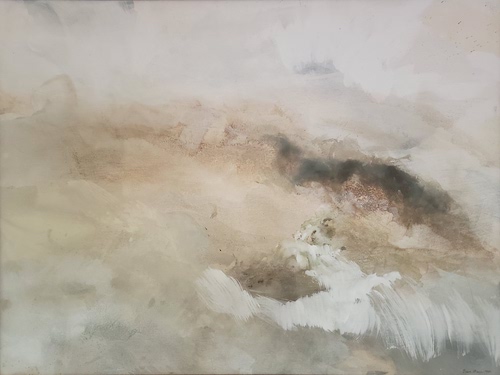David Maize considers himself fortunate to have spent the first five years of his life in the redwood country of Northern California. The forests and creeks near his home served as his playground, where he, his brother, and sister spent countless hours exploring. This early exposure to the natural world profoundly influenced his artwork and his view of humanity’s relationship with nature. His interest in art and woodworking began in elementary school, sparked in part by his father’s casual engagement with both. During middle school, after moving to Southern California, a friend introduced him to ocean snorkeling—a discovery that opened his eyes to a vibrant underwater world filled with color, shape, and motion. These themes would later emerge in his paintings.
By high school, Dave began experimenting with abstract expressionist and pop-art styles on a small scale, while continuing to refine his woodcarving skills. He started creating pieces to sell in local shops, marking the beginning of his journey as a working artist. In the early 1970s, as an art major at Humboldt State College, Dave’s expressionistic painting style flourished. Under the mentorship of several gifted artists, he shifted to large acrylic works on canvas, a format he continues to use. During this period, he also enrolled in an adult education class on guitar making—despite having no prior woodshop experience—and completed a fully playable acoustic guitar. This experience would prove influential later in his career.
Drawn by the political and cultural currents of the time and a desire to explore alternative lifestyles, Dave joined a large intentional community in Tennessee, home to around 1,200 people. His time there, focused on self-sufficiency and community service, put his artistic pursuits on hold but instilled values that have remained with him throughout his life. In 1984, Dave returned to the West Coast, settling in Oregon’s Rogue Valley. Although he initially planned to pursue painting full-time, he quickly realized the financial challenges of that path. Turning to the carpentry skills he had developed in Tennessee, he began working in remodeling, eventually setting up a woodshop and specializing in hand-carved entry doors. After about a decade, he returned to guitar making, this time focusing on acoustic bass guitars. His craftsmanship gained recognition among high-profile musicians, and he became an advocate for the use of non-endangered, local woods in instrument building. Now mostly retired from instrument building, Dave has returned to painting. Though he finds it challenging at times to reconnect with the spontaneity his style requires, he continues to enjoy the process. For him, painting remains a meaningful and grounding activity—especially valuable in these uncertain times.
